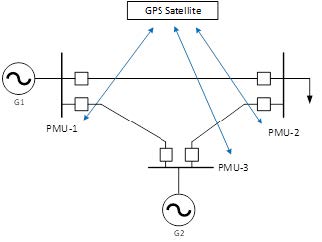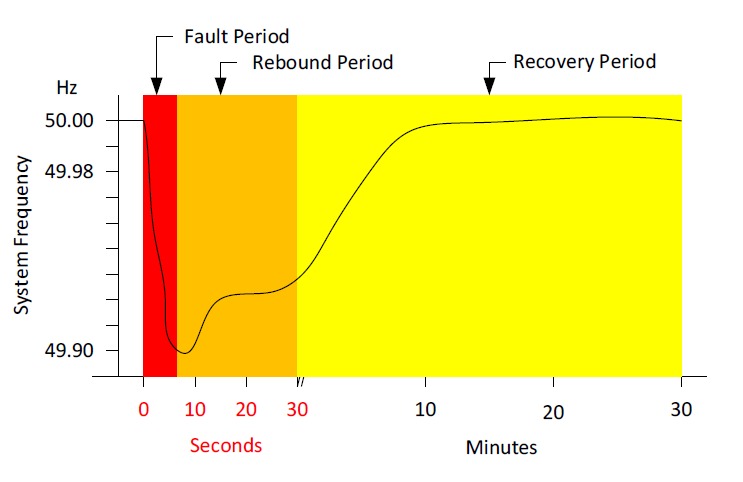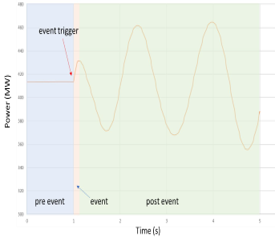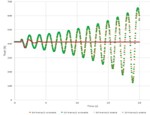Didik Fauzi Dakhlan
STEI-ITB
Nanang Hariyanto
STEI-ITB
Bambang Anggoro
STEI-ITB
Abstract
Wide Area Monitoring System (WAMS) using Phasor Measurement Unit (PMU) have been widely implemented in power systems. Due to its voltage and current measurements accuracy and precision, PMU can be adopted into power system defense plan as well as WAMS. However, there are considerations of the PMU data acquisition to be able to deliver performing analysis of the electrical power system, i.e.: the synchronization of data acquisition time, reporting rate effect, data sample acquisition, and data acquisition range. This paper addresses problems in PMU data collection and method to solve them prior to carrying out analysis to achieve reliable results. Further, the proposed method has been exercised and implemented in actual power systems accordingly the data collection issues in PMU for WAMS analysis have been solved. In contrast to other studies, this research offers insight into data collections and its solutions before they are examined.
Data Acquisition Problem for Analysis of multi-PMU data
A. Time Synchronization
- Requirement: IEEE Std C37.118.1 UTC time synchronization
- Facts: PMUs are not always in synchronous mode due to their GPS antenna capability restrictions. PMU measurement time tag will become void if the GPS antenna is of poor quality
- Problems: location, weather conditions, satellite acquisition method, and type of antenna

B. Reporting Rate
- Requirement: IEEE Std C37.118.1 PMU reporting rate
- Facts: each PMU has a distinct reporting rate
- Problems: data cannot be compared due to differences in the reporting rates among various PMUs.

C. Sampling Data Acquisition Technique
- Facts: After the occurrence of event, it is resolved that the analysis process may proceed. To commence the monitoring of the PMU readings, the triggers and their settings must be defined by the system operator in the interconnected power system.
- Problems: When an event occur for the pre-event issue, the data to be analyzed is the data that was stored in the data array at the corresponding precise moment. Data collected prior to the occurrence of such event is then not preserved.

D. Range of Data Acquisition for Analysis
- Facts:AnalyzingsuchassmallsignalstabilityisusedtodeterminetheimpactofthesystemfaulttomaintainthestabilityofthesystemThetoleranceforsystemstabilityisapproximatelyrangeupto30seconds
- Problems:theanalysisresultsmustbeabletobecommunicatedinlessthan30seconds.

Data Acquisition Solution & Result

A. Validation & Process
Analysis might take place in a centralized server following data collection. checkpoint is required to synchronize time across several PMUs prior to the data being transmitted to the analysis database in the centralized server. A data validation procedure is depicted prior to data analysis. The information of date and time of the data are those to be verified. An error data notification appears when the information of time or date of data differs one from another. This concept is implemented in the power system analysis dashboard.

B. Overlapping data acquisition technique
Overlapping data samples are employed in the sample data collection approach, where additional data is added to the sample data that is saved to account for pre-event conditions prior to the trigger event being triggered.


Power System Simulation & Measurement Result
The simulation will automatically generate data of the system covering either stable or unstable condition after the huge disturbance. Electrical parameters sampled with different 25 samples/second and 50 samples/second.
The actual measurement of PMUs was set in the 500 kV Indonesia interconnection system. The first event occurred during a load rejection test at one of the generators in bus I, which produced 880 MW out of the total load of 30,000 MW (or around 3% of the load). The measurement detected the damped oscillation during this event.


Conclussion
This study has provided valuable insights into data acquisition issues. It is crucial to recognize its drawbacks too, as they include the power system analysis approach, real-time data processing, and noise reduction for actual field data. These limitations imply that there is still a lot to learn about this area. In order to have a more thorough grasp of the power system analysis utilizing WAMS, it is advised that future research projects dig further into the noise reduction, real-time data processing, and the power system analysis technique elements. We can provide the foundation for a richer and more complex corpus of knowledge in real-time power system analysis by tackling these topics.